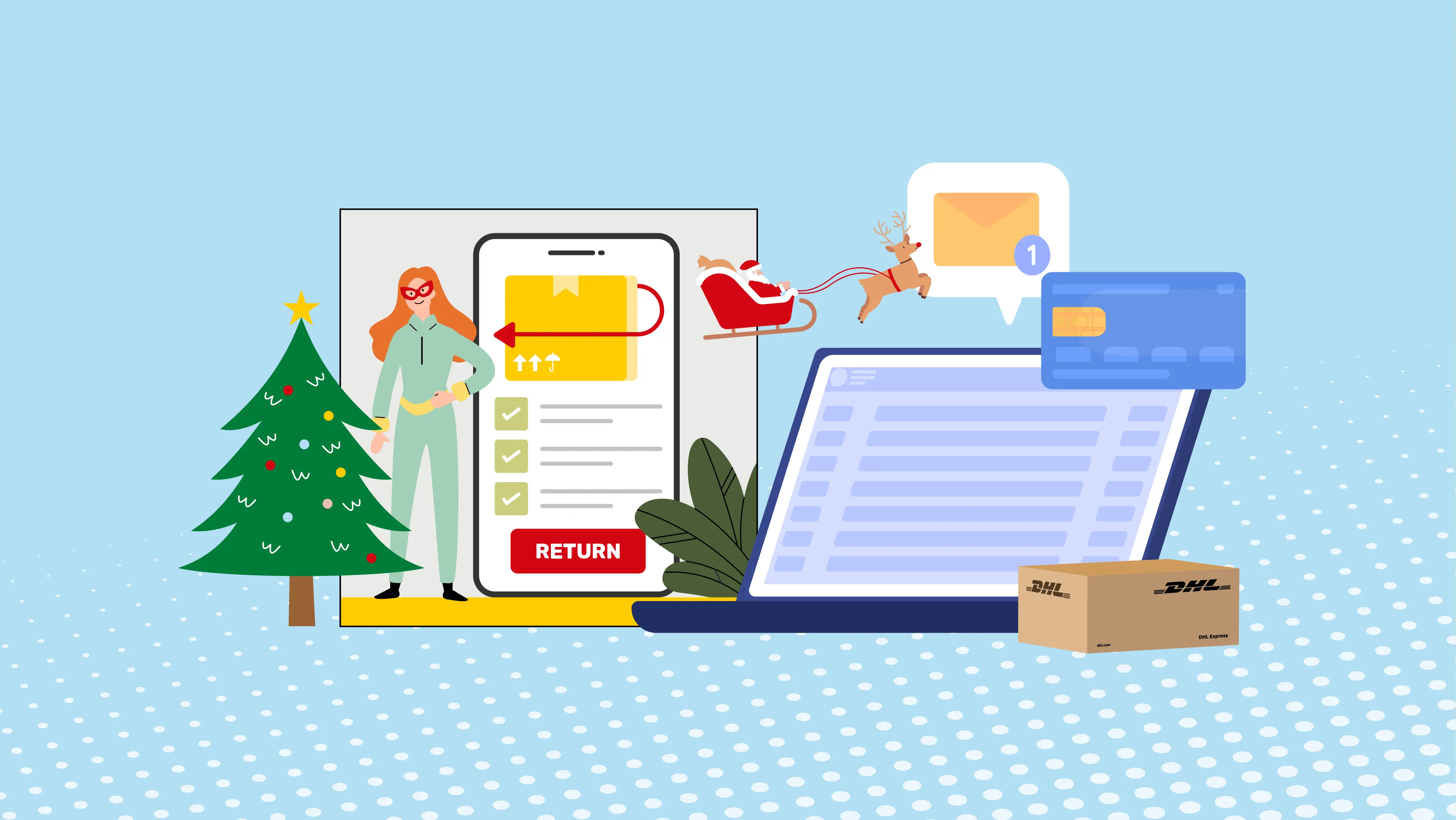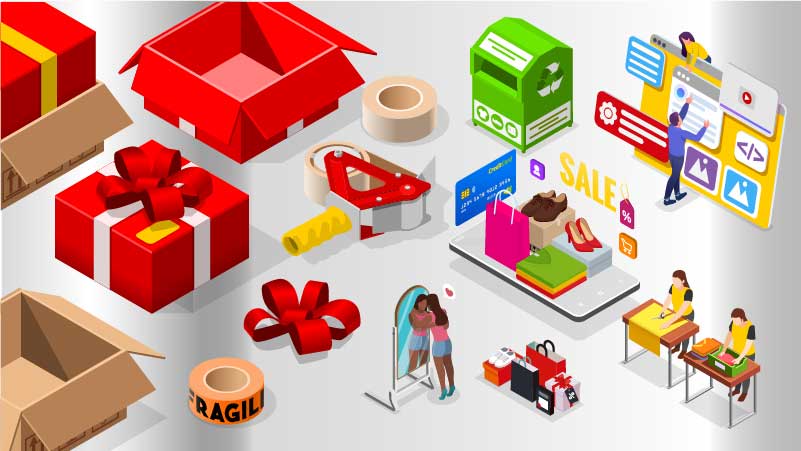Welcome, SME Superheroes! Peak Season is nearly here which means it’s time to start preparing. We know there’s lots to consider, but think of us as your trusty sidekick to help your business manage the rush! We’ve rounded up our top e-commerce tips to guide you; from holiday shipping deadlines to efficient packaging, here’s what to consider.
14 e-commerce tips for Peak Season
1. Order supplies early
According to a McKinsey survey1, in 2023, half of all holiday shopping commenced by October or earlier. To cash in, your business needs to be ready to go by the end of September. A big part of planning is ordering enough supplies for the busy season; if you’re concerned about anticipating stock levels accurately, inventory management software can help you forecast demand to ensure you never run out.
2. Give your website a polish
Speaking of your e-commerce website, the lead up to a busy period is the perfect time to check everything is in order. Does it load quickly? Is navigation fast and intuitive? Is it optimized for mobile? Check out our complete 22 golden rules of e-commerce to ensure your customers have the best experience possible. Remember, happy browsing leads to greater purchasing!
3. Give your website a polish
Speaking of your e-commerce website, the lead up to a busy period is the perfect time to check everything is in order. Does it load quickly? Is navigation fast and intuitive? Is it optimized for mobile? Check out our complete 22 golden rules of e-commerce to ensure your customers have the best experience possible. Remember, happy browsing leads to greater purchasing!
4. Create some buzz on social media!
Running a Christmas sales campaign? Great – now you just need to let everyone know! 22% of consumers prefer to discover new products via social media (versus searching on Google2), so ensure your social pages are packed full of gift ideas. You could even play around with a bit of live streaming – a great way to show your products off in more detail.
And don’t be mistaken into thinking social media is just for Millennials and Gen Z; more than half of social buyers are over the age of 35 (in the US)3.
5. Remember email
Social media may dominate marketing strategies these days, but there’s still a place for email. Use the channel to tease your brand’s holiday sales and entice customers to your website. There are a plethora of email marketing platforms out there that can help you plan and schedule your campaigns.
6. Consider free returns and exchanges
67% of online consumers will check a brand’s returns policy before committing to buy4, so a “free returns for the holidays” offer can help you win customers. Furthermore, research shows that offering free online returns encourages a higher average basket spend amongst shoppers5.
7. Don’t forget the final mile!
You’ve smashed your Christmas campaign, shifted all your stock, and wrapped your orders beautifully – now you just need to get them to your customers’ doors on time and in one piece. And for that, there’s no better logistics partner than DHL. As e-commerce experts, we can help you manage the delivery rushand keep those all-important customer promises.
8. Shipping: think fast…
Speedy shipping is integral over the holiday period. Not only will it keep your customers happy, but offering next-day delivery will help you to snag some last-minute shoppers, too. Be clear about your Express shipping options on your e-commerce website’s homepage; it’s one of the first things many consumers will look for.
9. Inventory and Supply Chain Management for Christmas Shipping
Managing your seasonal inventory is A big logistical challenge for your business. You probably placed your Christmas orders with suppliers months ago. However, with global supply chains so temperamental now, it’s important to maintain regular communication with your suppliers so that you can react quickly to any delays and minimize the impact on your end customers.
In 2021, a study by McKinsey9 found AI had helped businesses improve their inventory levels by 35%. An example is inventory management software which uses predictive analytics to help businesses better forecast demand surges and automatically order new materials from their suppliers when needed – a valuable system during the busy peak season.
Outsourcing your logistics to a third-party logistics (3PL) provider, like DHL Express, is another step to consider to help your business meet demand. A 3PL provider can manage procurement, warehousing, transportation of goods, and order fulfillment for you, in addition to customs brokerage if you’re shipping internationally.
10. Offer flexible payment options
“Payment options” (or a lack of them) was cited by 40% of online shoppers as a leading reason for cart abandonment6. To overcome this, offer lots of payment services at your checkout – including digital wallets. Consider offering a Buy Now Pay Later solution, too – last year, amidst the tumultuous economy, many budget-conscious consumers turned to installment plans to help manage their spending, and this year the trend is expected to continue7.
11. Use AI chatbots to enhance the customer experience
AI-powered chatbots use customer data to understand preferences and make personalized product recommendations. And, unlike humans, they are available 24/7, meaning a customer enquiry or sales opportunity will never be missed.
12. Deliver unboxing magic
There’s a reason “unboxing” videos are a big hit on YouTube and TikTok. Online shoppers are increasingly seeing the packaging of their purchases as a big part of the experience. Christmas is the perfect time to go all out and really wow your customers: invest in some beautiful festive packaging for your products, offer gift wrapping at checkout, and include a thank you note with orders. These personal touches will be appreciated by customers and increase the likelihood of them posting about your brand on social media. Bonus points for using sustainable packaging.
13. Consider free returns and exchanges
Product returns are a pain but you can’t ignore them – returns policies influence the purchasing decisions of 82% of consumers8. Making them free is a big commitment for any small business, but should be weighed up against the extra sales it could incentivize. Whatever you decide, ensure your returns policy is clear and thorough.
14. Choose a trusted logistics partner
Whilst there are a lot of logistics considerations for small businesses over Peak Season, you can be sure of the one customers care about the most – delivery. And for that, there’s no better partner than DHL Express.
With e-commerce volumes expected to surge significantly over the next few months, the logistics leader has made significant investments into its transportation and shipment handling capacity. “We are expecting a healthy surge in demand for express services in the fourth quarter and are making the necessary investments to make our customers successful,” CEO John Pearson says.
With DHL Express, you can be assured of fast, reliable deliveries – leaving you more time to focus on your business.
Attention SME Superheroes! With Peak Season nearly here, we know there are a million things for small businesses to consider. But don’t fret! Use our dedicated Peak Season Sales & Logistics Checklist to ensure your business is fully prepared to cash in on every opportunity. Happy selling!
Download your free checklist here1, 7 – Forbes, January 2024








